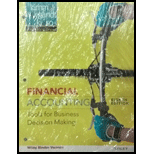
Concept explainers
Introduction:
Assets: Assets are those items that provide value for money and future economic benefit for an organization. Assets of an organization may be in these two forms: Tangible or intangible form. Examples: Cash, Short-term investments, Inventories, Accounts receivable, Equipment, Supplies and
Liabilities: Liabilities are obligations of the business. These are the claims against the resources that a business owes to outsiders of the company. Liabilities may be Current liabilities, and Long-term liabilities. Examples: Creditors, Bills payable, Bank overdraft, Salaries and wages payable, and Notes payable.
Expenses: Expenses are the costs that companies borne to produce and sell the goods and services to the customers or clients. Examples: Utilities expense, Salaries expense, advertising expenses.
Revenues: Revenues are the income or earnings that a company receives for delivery of goods and services. Examples: Service revenue, Interest revenue, Fees earned.
Common stock: Common stock is an owners’ claim to the assets of the company.
To Classify: The elements of financial statements.
Want to see the full answer?
Check out a sample textbook solution
Chapter 1 Solutions
Bundle: Financial Accounting: Tools for Business Decision Making 8e Binder Ready Version + WileyPLUS Registration Code
- Principles of Accounting Volume 1AccountingISBN:9781947172685Author:OpenStaxPublisher:OpenStax College
 College Accounting, Chapters 1-27AccountingISBN:9781337794756Author:HEINTZ, James A.Publisher:Cengage Learning,
College Accounting, Chapters 1-27AccountingISBN:9781337794756Author:HEINTZ, James A.Publisher:Cengage Learning, Financial Accounting: The Impact on Decision Make...AccountingISBN:9781305654174Author:Gary A. Porter, Curtis L. NortonPublisher:Cengage Learning
Financial Accounting: The Impact on Decision Make...AccountingISBN:9781305654174Author:Gary A. Porter, Curtis L. NortonPublisher:Cengage Learning  Auditing: A Risk Based-Approach to Conducting a Q...AccountingISBN:9781305080577Author:Karla M Johnstone, Audrey A. Gramling, Larry E. RittenbergPublisher:South-Western College Pub
Auditing: A Risk Based-Approach to Conducting a Q...AccountingISBN:9781305080577Author:Karla M Johnstone, Audrey A. Gramling, Larry E. RittenbergPublisher:South-Western College Pub




